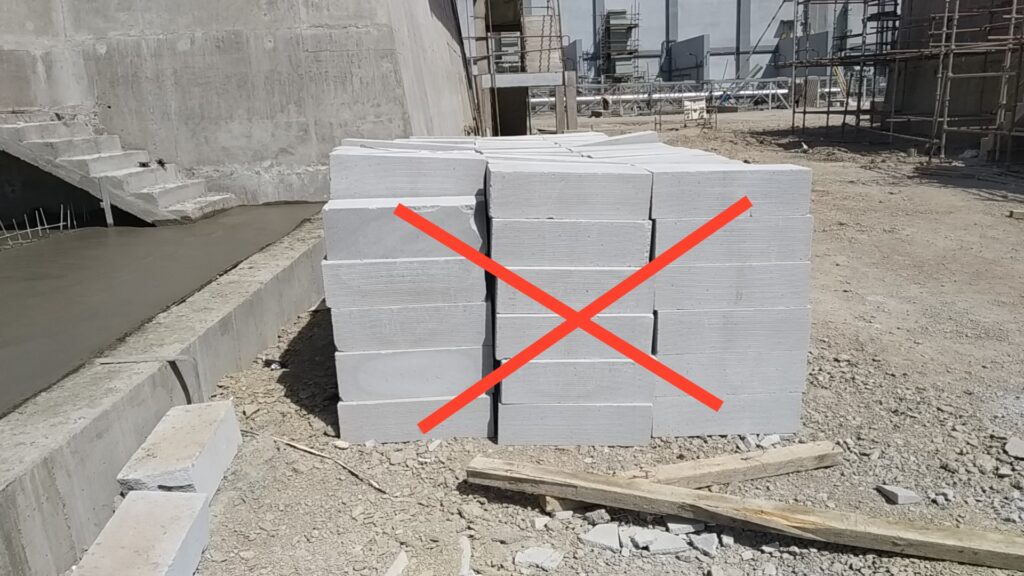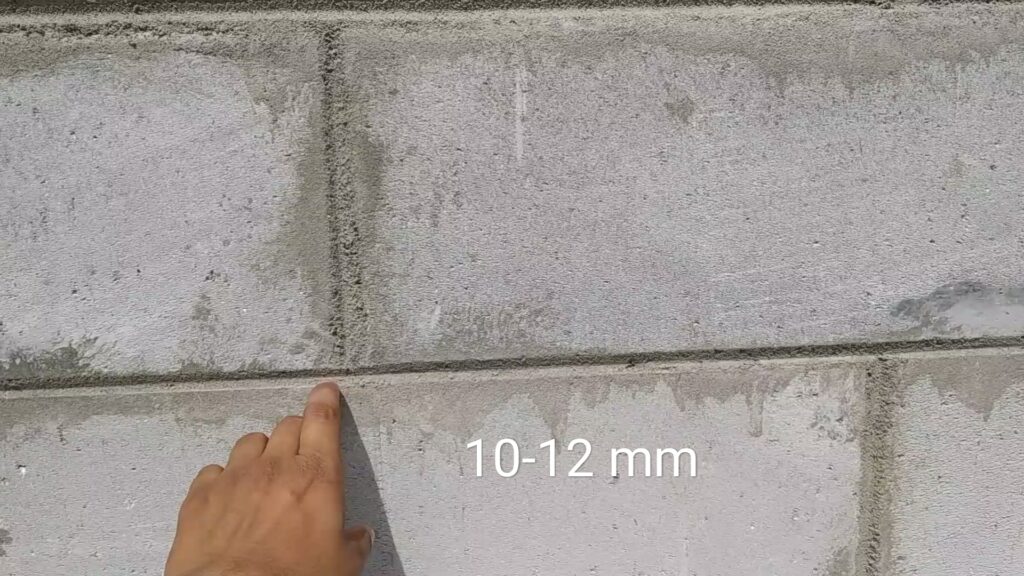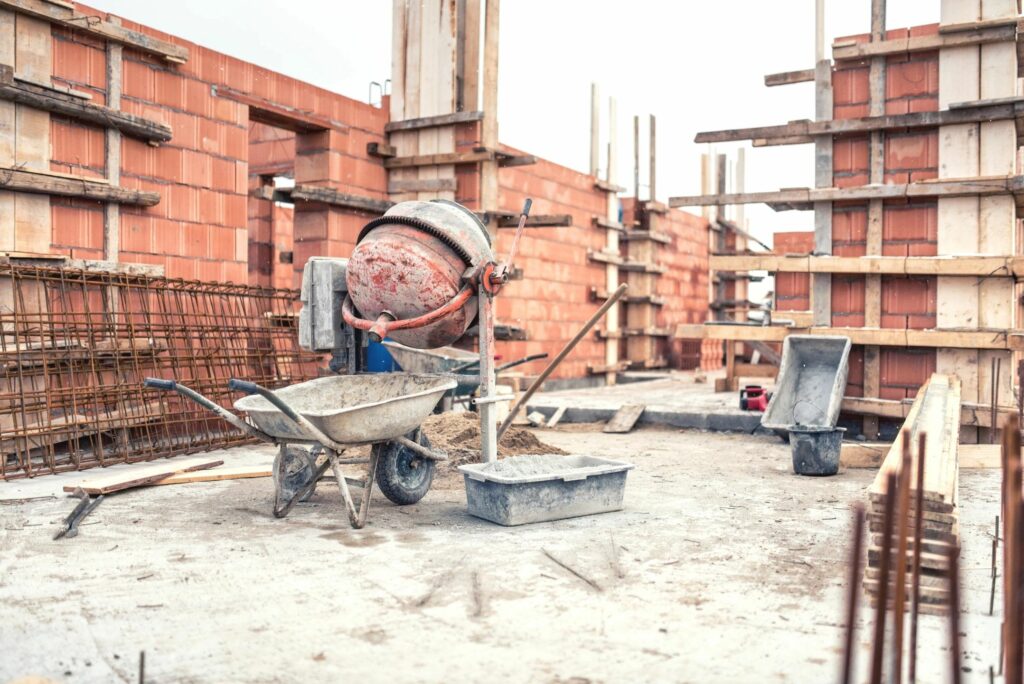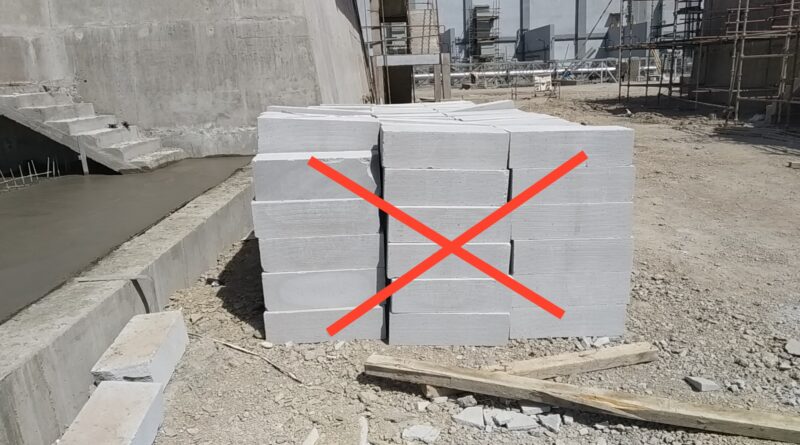AAC Block Quality Check on construction site
Autoclaved Aerated Concrete is a Lightweight, Load-bearing, High-insulating, Durable building product, which is produced in a wide range of sizes and strengths. AAC Blocks is lightweight and compare to the red bricks AAC blocks are three times lighter.
Qualtiy Checklist of AAC Block on construction site :-
STACKING :-

Stacking should be done only on even and leveled ground surface above the 100 -200 mm for Ground Surface
JOINTING :-

Keep it Limited to 10 to 12 mm with regular cement mortar and 3 to 4 mm with ready made jointing mortar
COPING :-

Coping Beam with 2 number of 8 diameter reinforcement bar after 1.2 to 1.4 m height from the start level
MOTAR FOR MASONRY :-

Ready made jointing chemical with 3 to 4 mm thickness or with conventional cement mortar (1:6 )
Lintel :-

Minimum 150 mm support for lintel at both side .Lintels should be placed on motar bed
WETTING OF BLOCK :–
Before application of motar , dip block in water and lift immediately or apply water with brush
CURING OF MASONRY :-
Curing required only for cement mortar joint and not required for ready made mortar jointing
CUTTING OF BLOCK :
Use tool like hacksaw or rotary cutter or hand wood saw
PLASTER :-
Minimum External plaster thickness 12 to 15 mm
Height :-
Check that AAC block is not carried out more than 1200 mm ina day
Tolerance :-
Check verticality and Alignment of the AAC BLOCK .Deviation Shall not be more than 10 mm in Alignment and 5 mm in verticality for 3m height
Advantage of AAC Block are describe as following :-
1.The AAC Block help in quick construction work, thereby reducing time and constructions costs. In AAC Bricks it is easy to use ordinary tools for cutting the walls for electrical work, including drilling of holes
2. AAC Blocks have a compressive strength of an average (3-4.5) N/mm³. This is superior to most types of light weight blocks. Moreover, it is 25 per cent stronger than other products of the same density.
3. The AAC Blocks are resistant to fire between a certain limit of time. It is from a 2 hours minimum time to 6 hours maximum time limit.
4.The AAC Blocks are resistant to pests and insects.
5. AAC Blocks are resistant to earthquakes. The natural property it is made from is light in weight. This in turn increases the stability in the building structures.
6. AAC Blocks are highly cost effective in nature. Thus, offering cost saving and less investment on the construction work.
7. The AAC Blocks are Non-toxic in nature. They cannot be damaged from smoke from pollution and smoke of the chimney in factories.
8. AAC Blocks are light weight. It is the biggest feature, which is helpful in transport and during construction work as well.
9. Thermal insulation the AAC Blocks have insulating qualities. The thermal conductivity level of the AAC Bricks keeps the room temperature warm during winter. In summer, it is cool and nice. At the end of the day it offers huge savings on air conditioning load, which means less power bills.
10. ACC Blocks are sound proof in nature. This is due to their porous nature, which absorbs sounds up to certain decibel levels.
Disadvantages of AAC Block are descibe as following :-
The major disadvantages of autoclaved aerated concrete are listed below.
- The production cost per unit for AAC is higher than other ordinary concrete.
- Number of manufacturer is limited. So, cost will drastically increase in places far from the manufacturer and need to travel a long distance.
- It is not as strong as conventional concrete.
Specification :-
| Size | mm | 600 x 200 x (75 to 300), |
| Compressive Strength | N/mm 2 | 3 – 4.5 (IS 2185 part 3) |
| Normal Dry Density | Kg / m 3 | 550 – 650 |
| Size Tolerance | mm | ± 1.5 |
| Fire Resistance | Hrs. | 2 to 6 (Depending on Thickness) |
Test :-
Compressive Test
Density Test
Sound Transmission Test
Moisture Test
U-value Test
Dry Shrinkage Test


Raw materials used for the manufacture of AAC block.
Mainly Fly ash. Fly ash constitutes to about 75 to 80 % this is why these blocks apart from high entrapped air, have light weight and lower thermal conductivity to save air conditioning loads during life time of building.
However due to entrapped air AAC blocks have limitations that the strength is less than half compared to bricks and are not suitable for direct nail hammering in the walls.
This limitation is overcome by new technology based blocks using hoti 90% ash as raw material which gives the blocks low weight, low thermal conductivity but maintaining very high ( above 85 kg/ cm2) as compressive strength thus giving benefits of both bricks n AAC blocks as hal the cost.